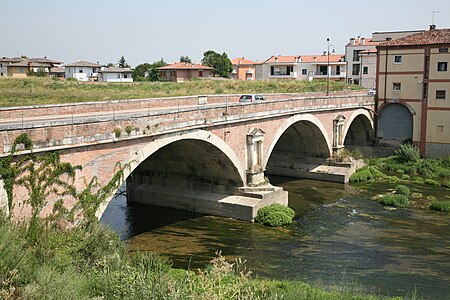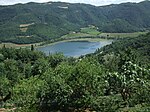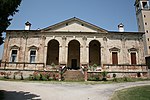Tesina
Italy river stubsRivers of ItalyRivers of the Province of VicenzaTributaries of the BrentaVeneto geography stubs ... and 1 more
Waterways of Italy

The Tesina is an Italian river that runs in the Veneto region, in the north-east of Italy. Its source is at Cibalde, a locality in the commune of Sandrigo. It flows in the Bacchiglione river near San Pietro Intrigogna, in the territory of Vicenza.
Excerpt from the Wikipedia article Tesina (License: CC BY-SA 3.0, Authors, Images).Tesina
Via Scodegarda, Arcugnano
Geographical coordinates (GPS) Address Nearby Places Show on map
Geographical coordinates (GPS)
| Latitude | Longitude |
|---|---|
| N 45.4913 ° | E 11.6016 ° |
Address
Via Scodegarda
Via Scodegarda
36023 Arcugnano
Veneto, Italy
Open on Google Maps








